November 9, 2017
Bee-Hind the Scenes With Beekeepers & How We Help
I lucked into a first-time-ever moment in my garden! A fiery skipper clasped so firmly onto a purple aster that it hadn’t a thought for me as I crept up.
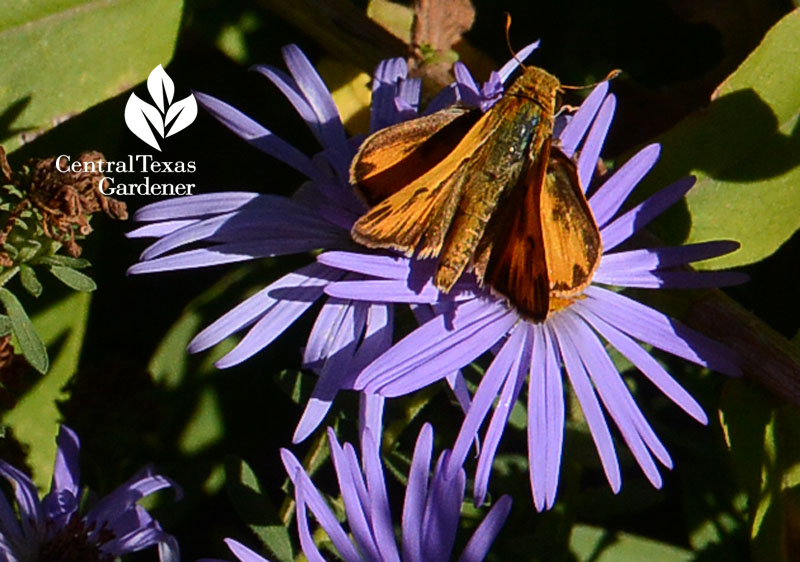
I love perennial asters (Symphyotrichum oblongifolium) for their placeholder foliage and durability in drought or rain bombs.
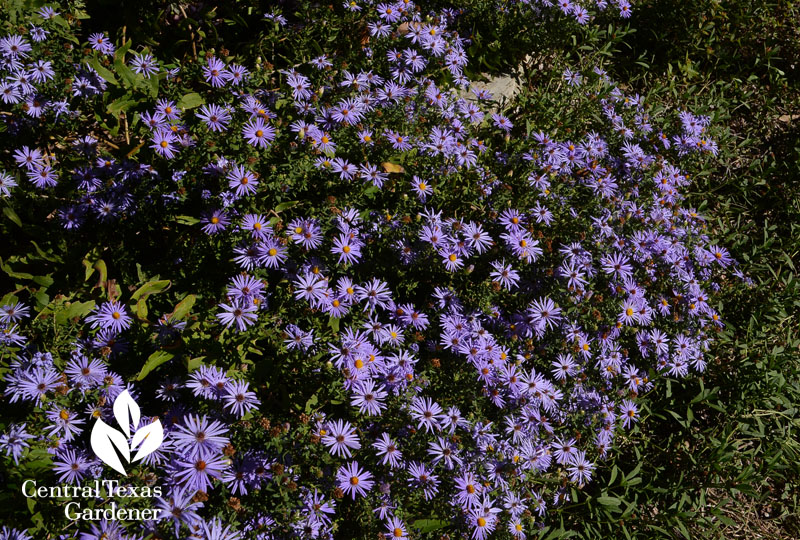
Come October, their lavender blossoms explode to a chorus of eager bees, butterflies, and other pollinators.
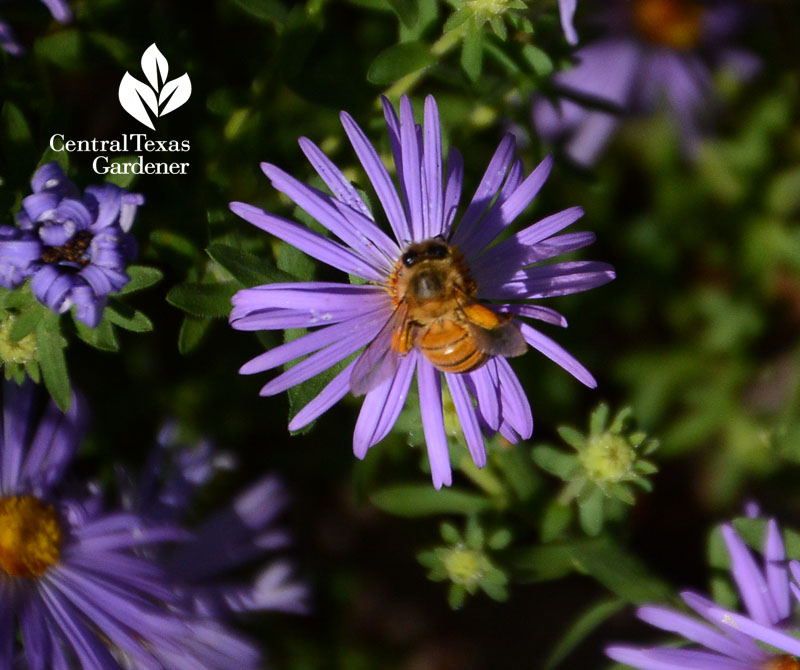
Beekeeping is the latest locavore pursuit for distinctive honey that rivals craft beer. This week, we meet a few beekeepers and tell their stories, including animated educator, storyteller, musician and author Kim Lehman.
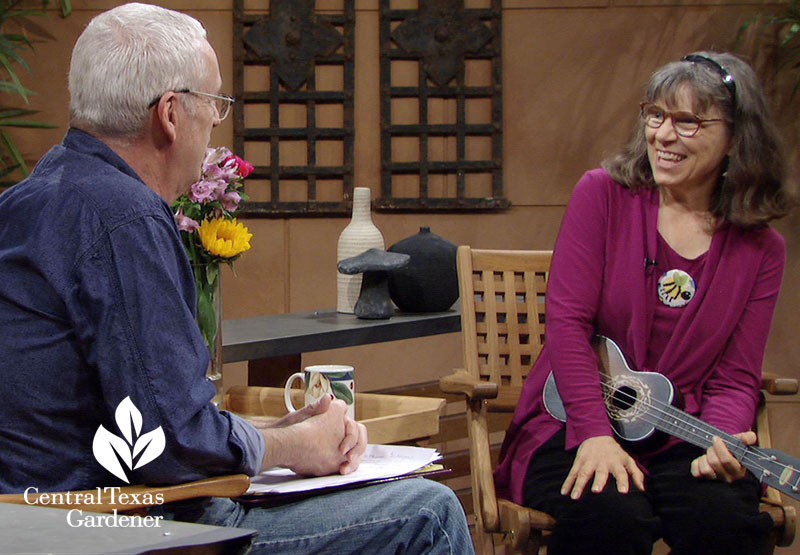
Aside from her historic CTG moment playing the ukulele, Kim performs some of the magic tricks and quick science projects to wow the whole family from her book Beekeeper’s Lab: 52 Family-Friendly Activities and Experiments Exploring the Life of the Hive from Quarto Homes.
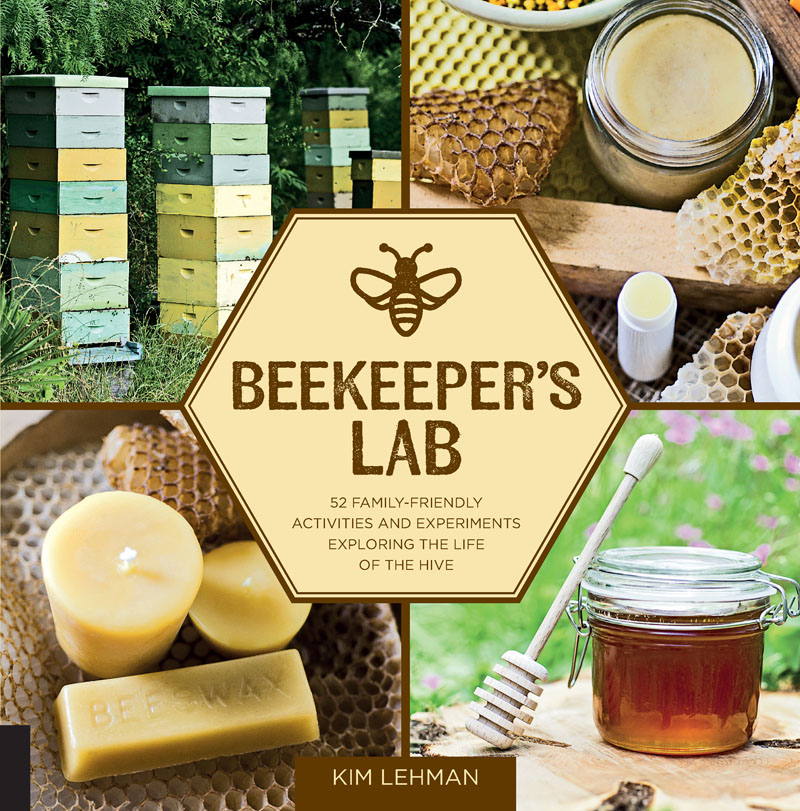
As a beekeeper herself, Kim wrote Beekeeper’s Lab to help families get started. Even if you’re not ready to set up a hive, she has lots of DIY projects to play around with science, illustrate pollination, plants for bees, and homemade feeders when flowers are sparse.
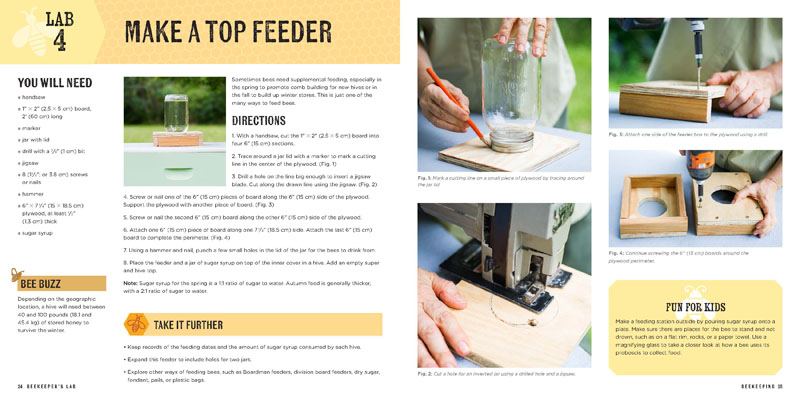
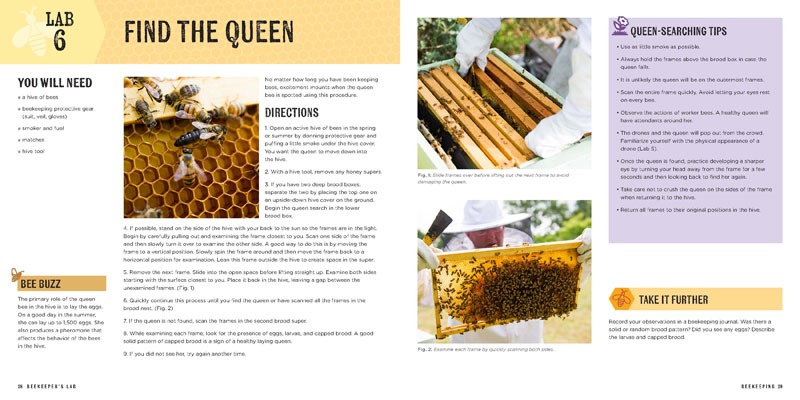
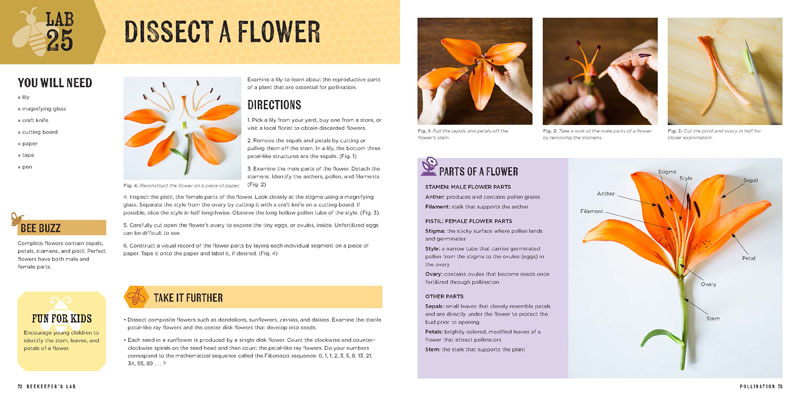

Kim had us all so awestruck that it’s amazing our camera operators stayed steady. Our experiment with her UV flashlight (must get!) didn’t work out great in the studio, but she explains how bees see colors quite differently than we do.
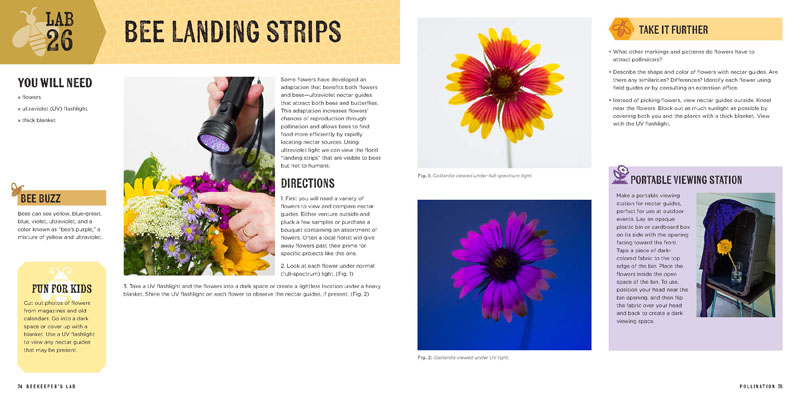
And try her no-bake recipe for fast, easy, energy treats made with honey, oatmeal, peanut butter and whatever else you want to literally throw in.
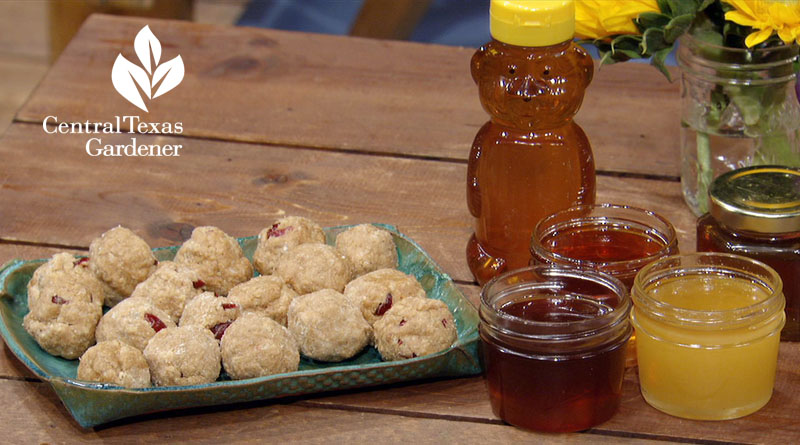
Check out her website for info on her super duper fun, educational workshops and programs for kids from 2-12. And watch now!
Even though Texas celebrated Arbor Day last weekend, there’s plenty of time to plant trees! November is prime time to establish roots this winter. What about adding native possumhaw holly (Ilex decidua)?
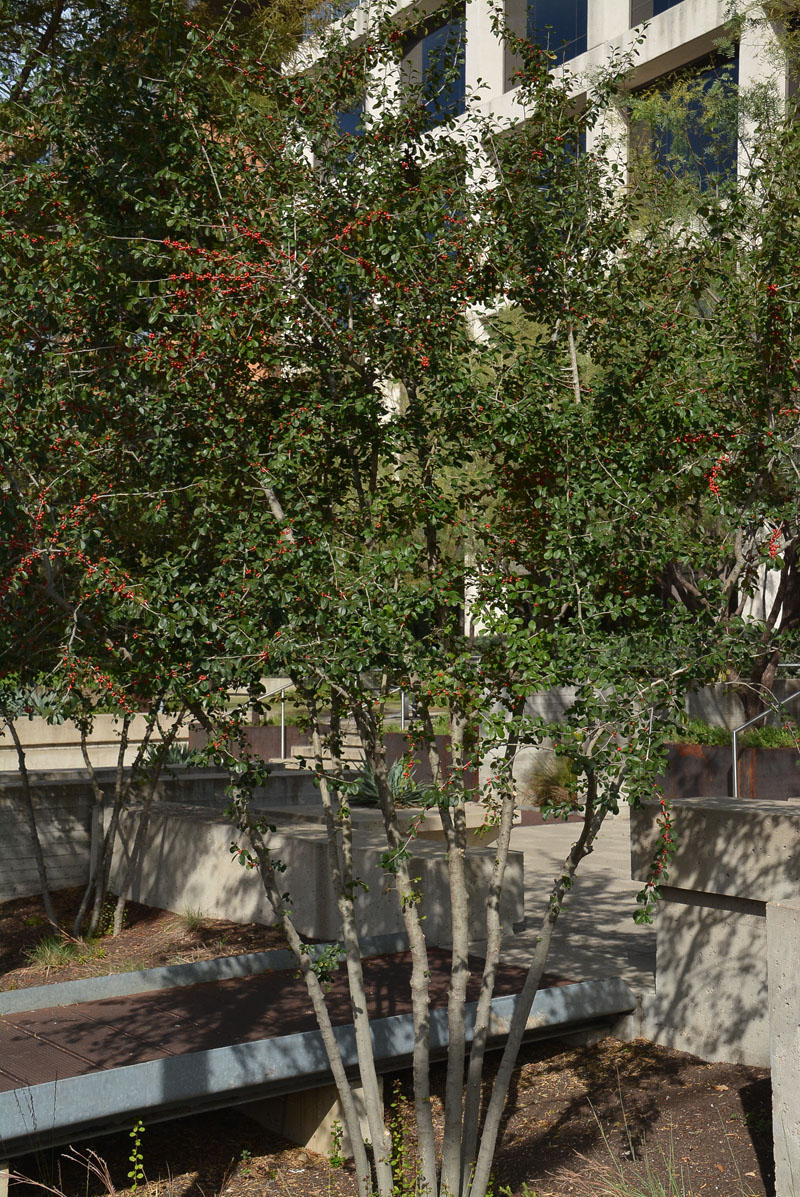
Its flowers attract pollinators, like bees, and you’ll be rewarded all winter with birds heading for those brilliant berries on its beautifully architectural shape. Daphne explains how to grow this shrubby tree.
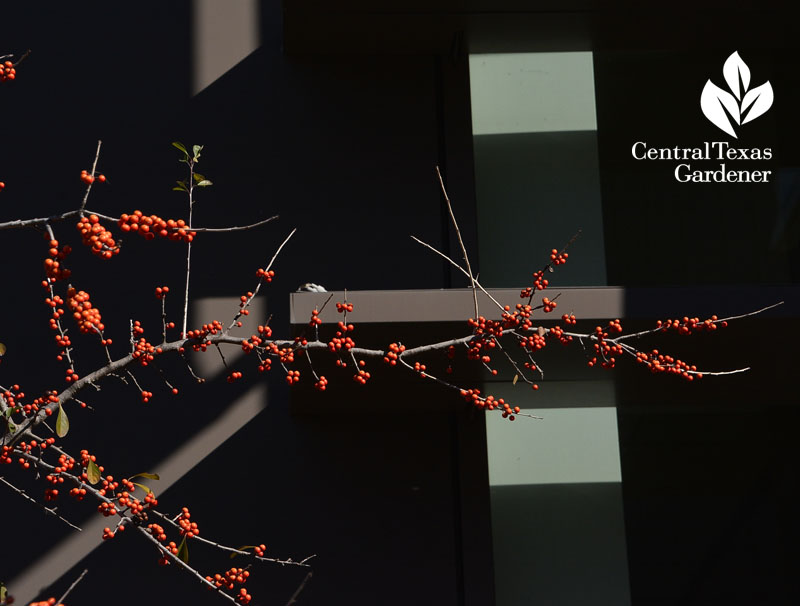
Holly berries are poisonous to us, but there are many plants you can bring inside to enjoy, like all those herbs!
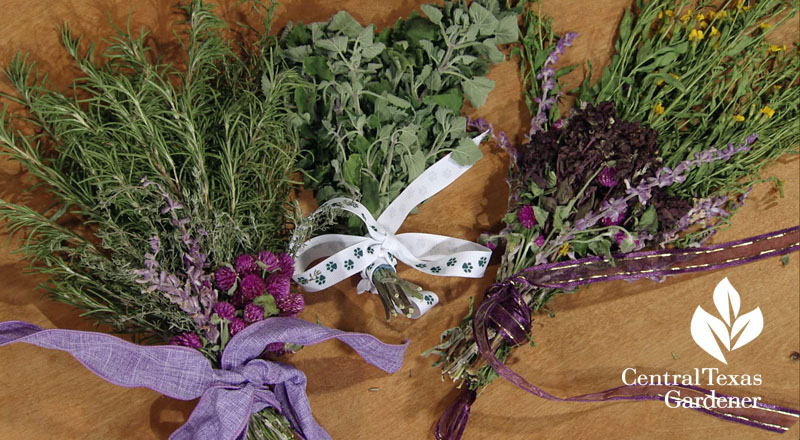
Trisha gets your craftsy on with homemade herbal swags for soothing baths and teas, tasty recipes and to get a charge out of your favorite feline friend. As craft-challenged as I am, even I can handle this!
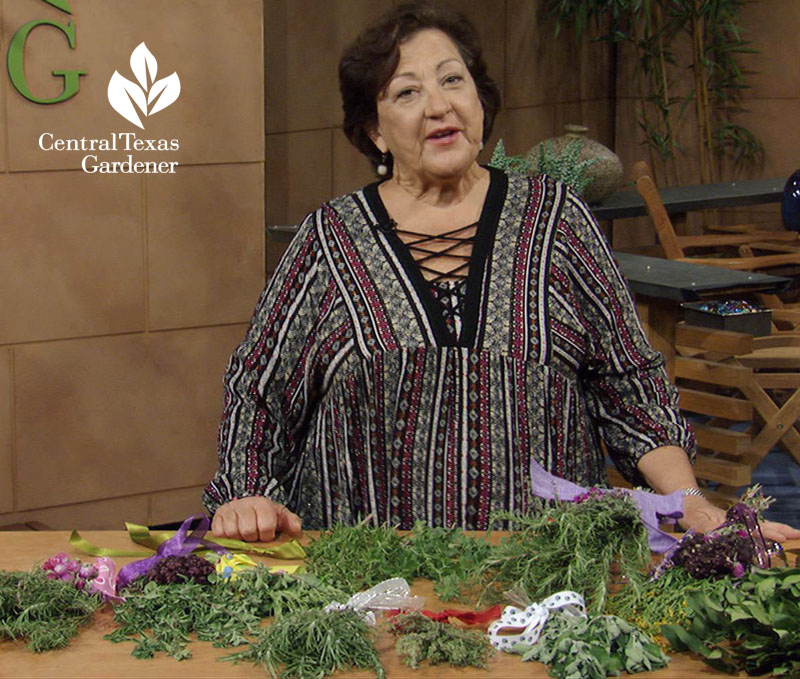
Shape up that overgrown bay laurel and gift yourself or a cooking buddy with “spice on a swag” for those winter stews and soups! Watch now!
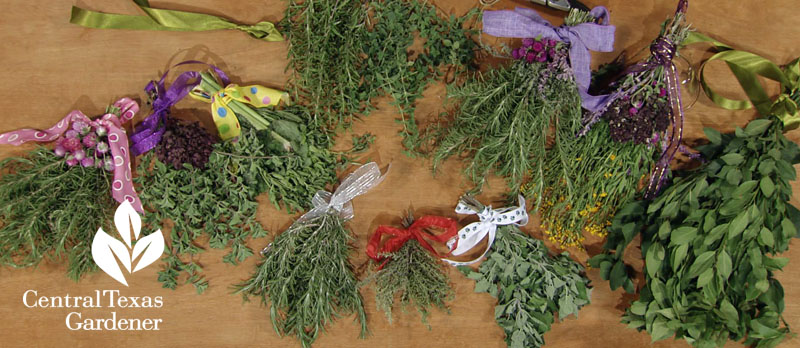
On tour, we combed a few beekeepers for the sweet stories bee-hind their fascination. Family beekeepers Christine Giordano and Ryan Thomas started with chickens long before they hatched gregarious daughter Henrietta.
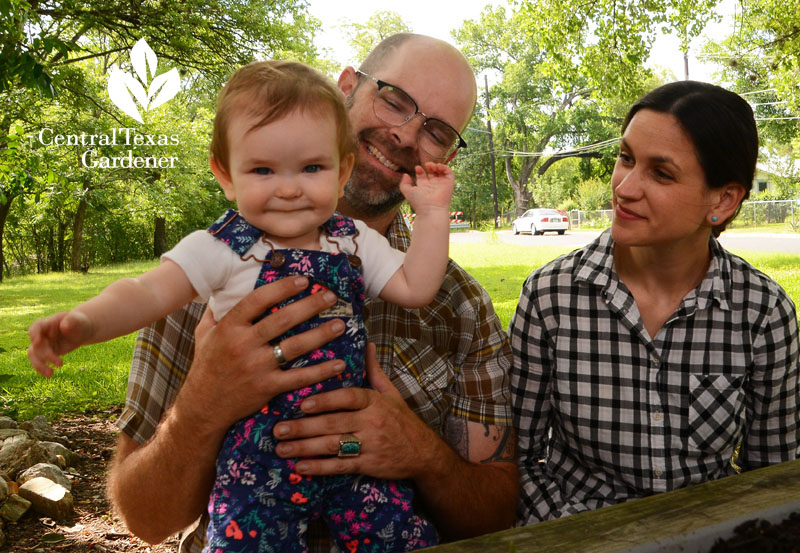
As much as they love to travel in their Vanagon camper, they love to homestead, too. They lucked into extended property adjoining theirs that backs up to a greenbelt.
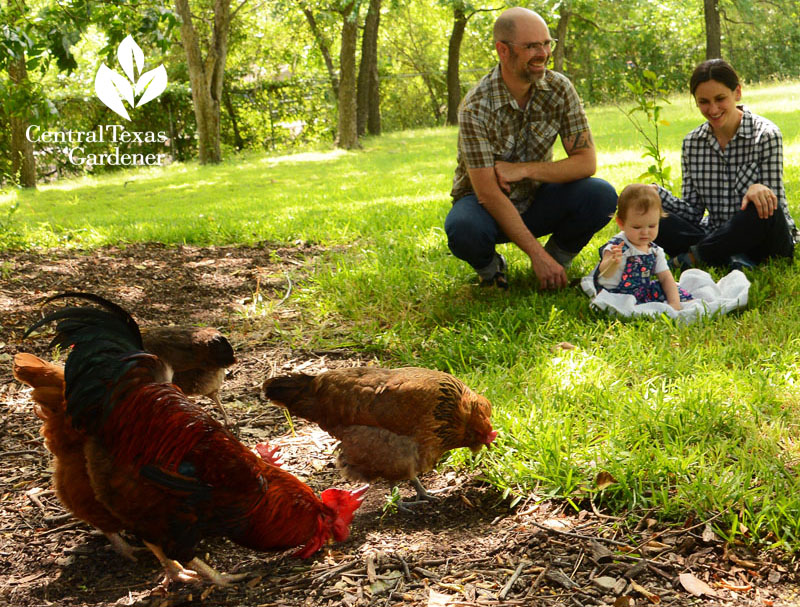
So, they nicknamed their home @campfarm where chickens let out for a run head straight to their camp fire for a dust bath.
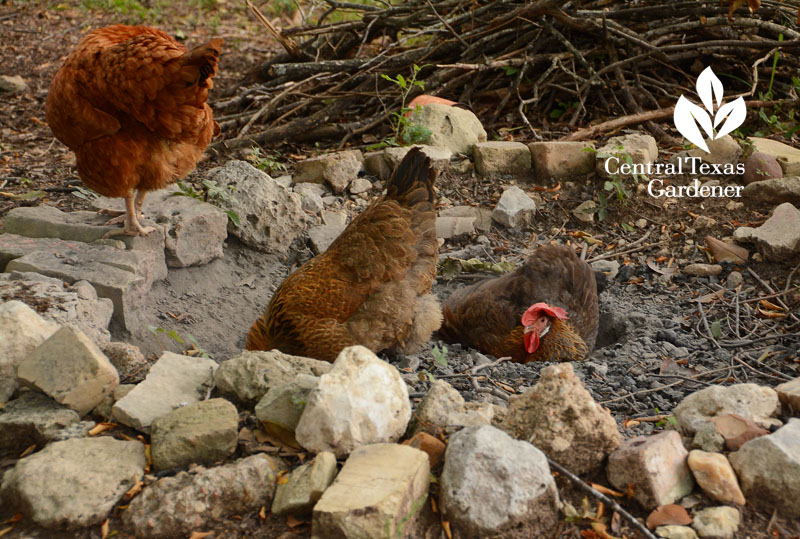
Creative recyclers, they inserted string lights into coffee cans to light up evenings around the fire.
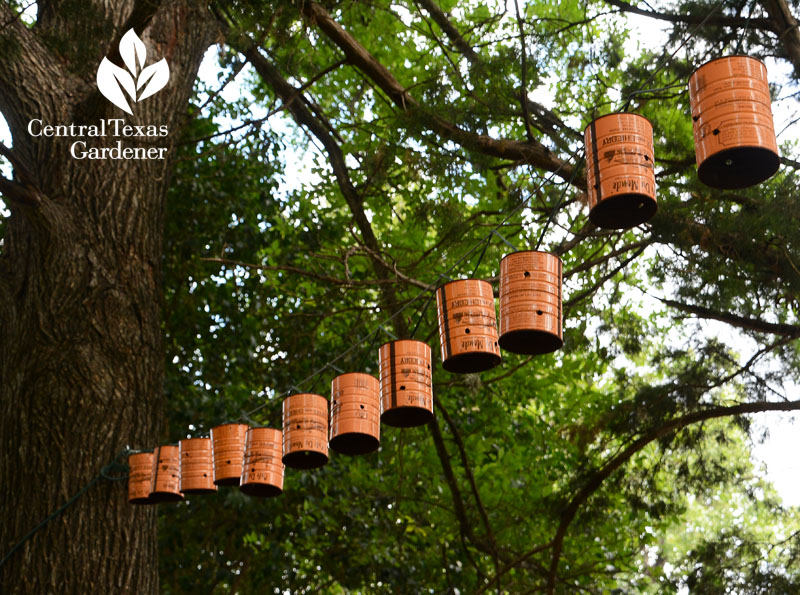
Ever adventurous about sustainability, Christine took beekeeping classes. Then, she and Ryan loaded their car with 10,000 bees—in bee carriers, of course!
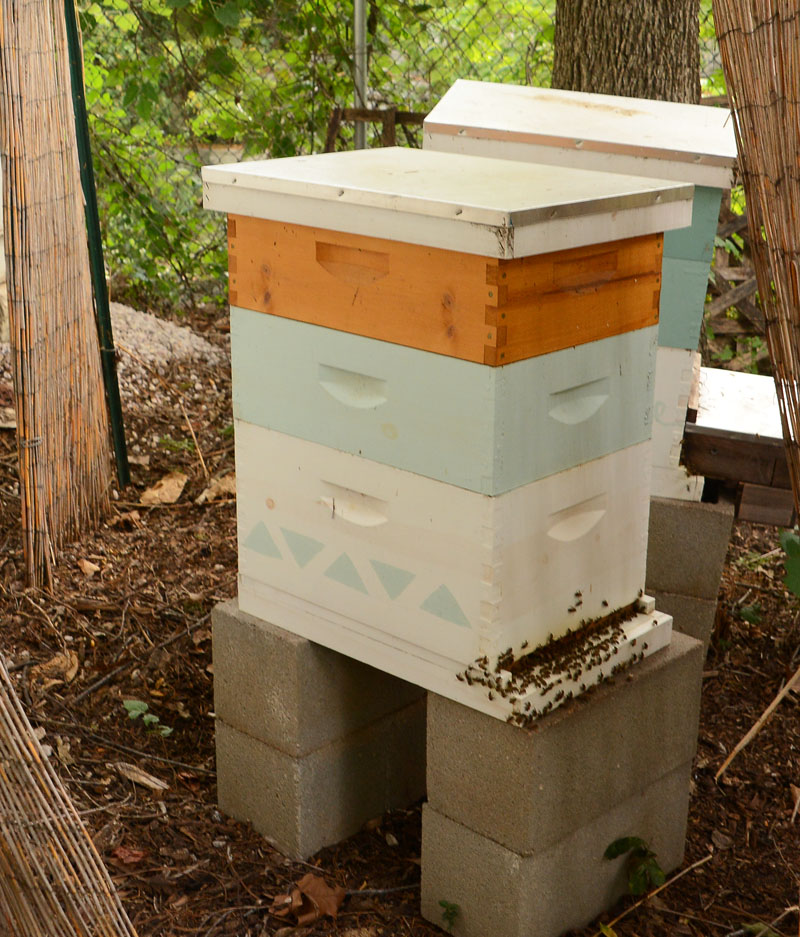
They were hooked when they harvested their first-ever honey from Langstroth hives. Ryan says the beeswax works great on bikes as a thread lock. Christine even contributed video of their crush and strain harvest and how a fellow beekeeper wrangled their bees when the hive split and swarmed, a bonus for beekeepers.
At the Sustainable Food Center, Tara Chapman from Two Hives Honey is one of two beekeepers who maintain the apiary.
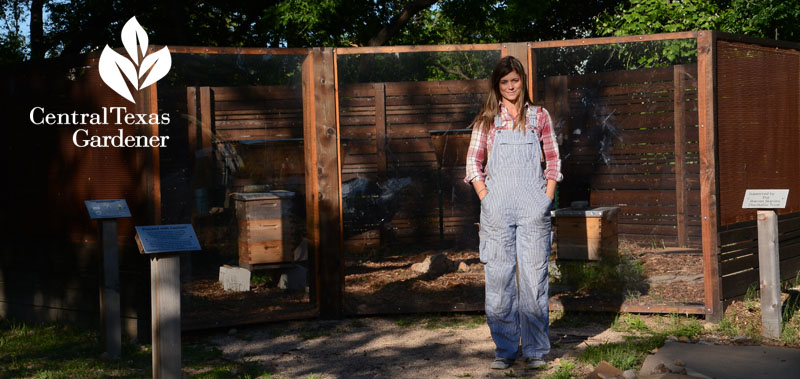
After working with the federal government in war zones, she discovered beekeeping on a trip back to Austin. She fell in love with bees, quit her job, and started Two Hives Honey (now with a new brick and mortar shop).
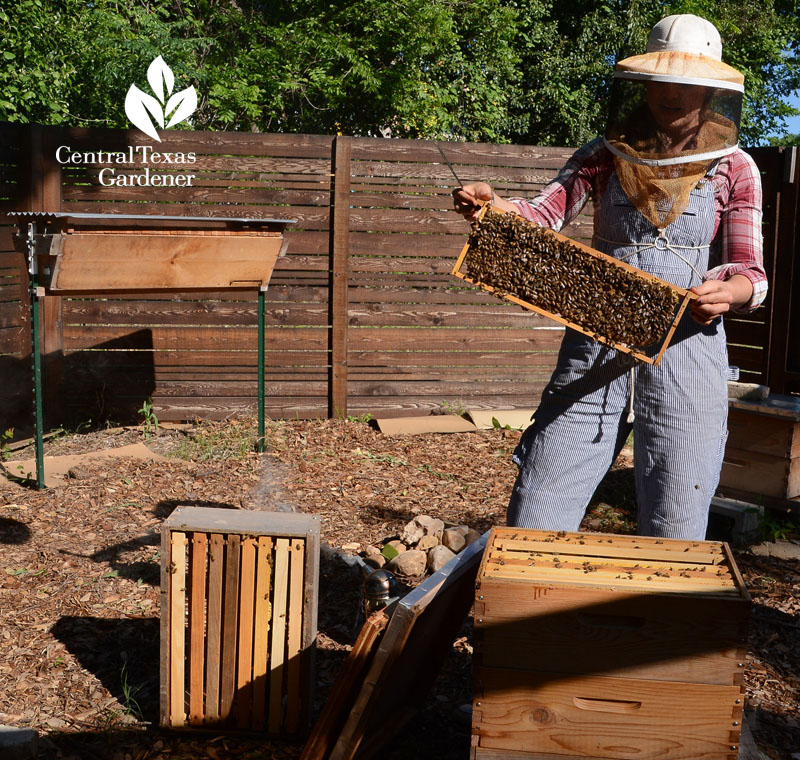
SFC’s apiary extended their mission to cultivate a healthy community by increasing access to locally grown, fresh food.
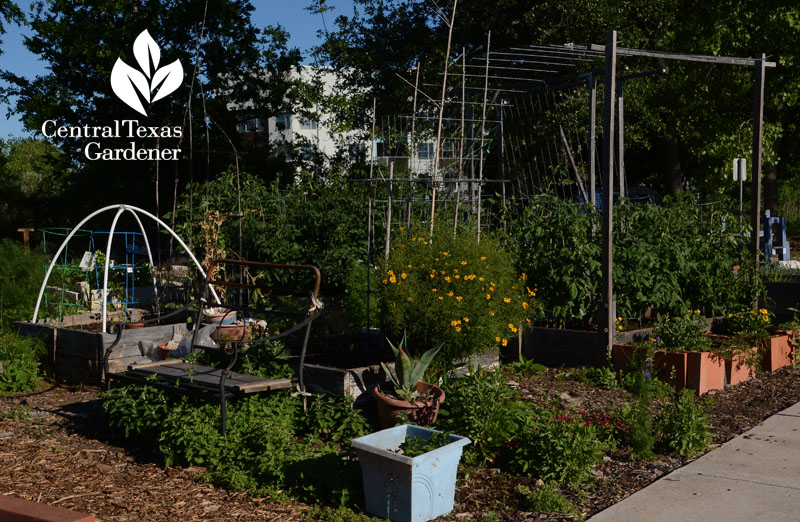
They added the apiary to assist pollination of crops (that worked!) and to educate the public about bees and pollination.
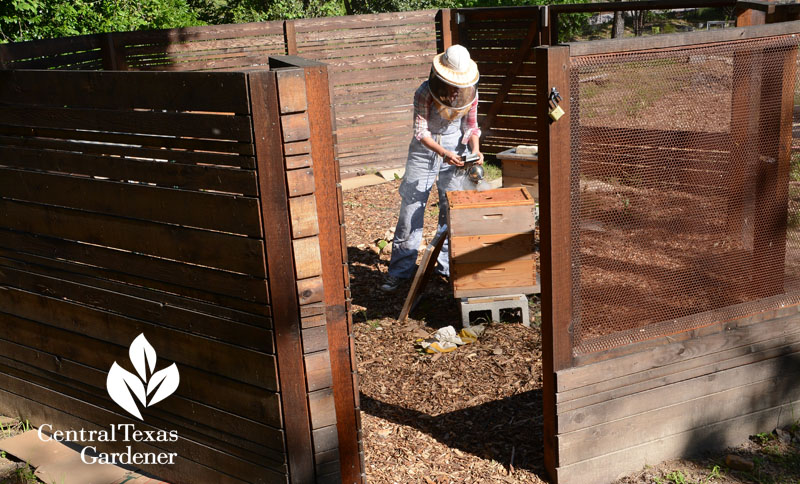
Liz Cardinal, SFC’s Grow Local Teaching Garden Coordinator, designed and helped build the honeycombed-shaped apiary with a UT School of Architecture class under the direction of Steve Ross.
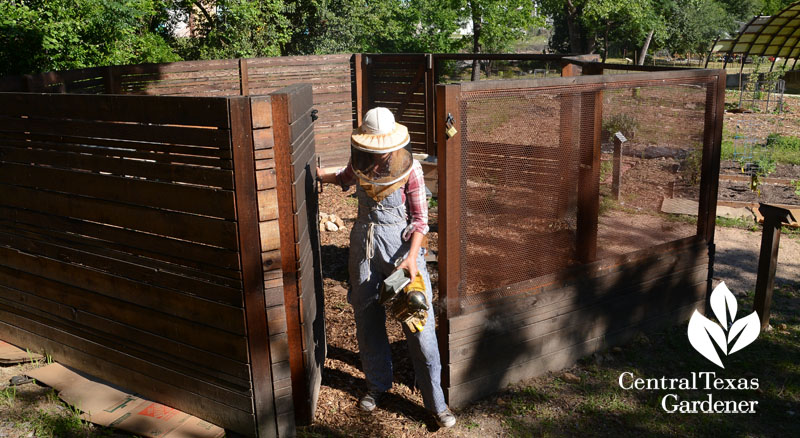
They started with packages of bees, along with two swarms collected from concerned homeowners, to house in two Langstroth hives and two top bar hives.
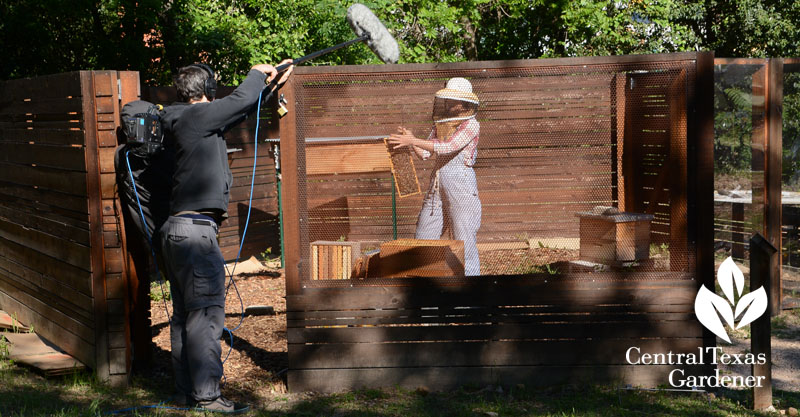
Tanya Phillips and Chuck Reburn at Bee Friendly Austin took a few bee classes and decided they’d found their second careers. We were awed when a hive split and thousands of bees swarmed safely around us. Soon after this picture, Tanya and Chuck coaxed them into their new starter hive.
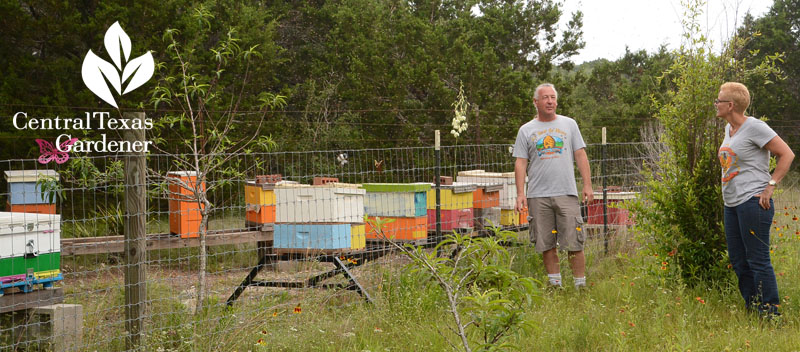
Anyway, they started teaching classes. When students wanted some of their bees, they began raising healthy colonies to sell. Here, female worker bees are “bonding” with a new queen in an introduction cage.
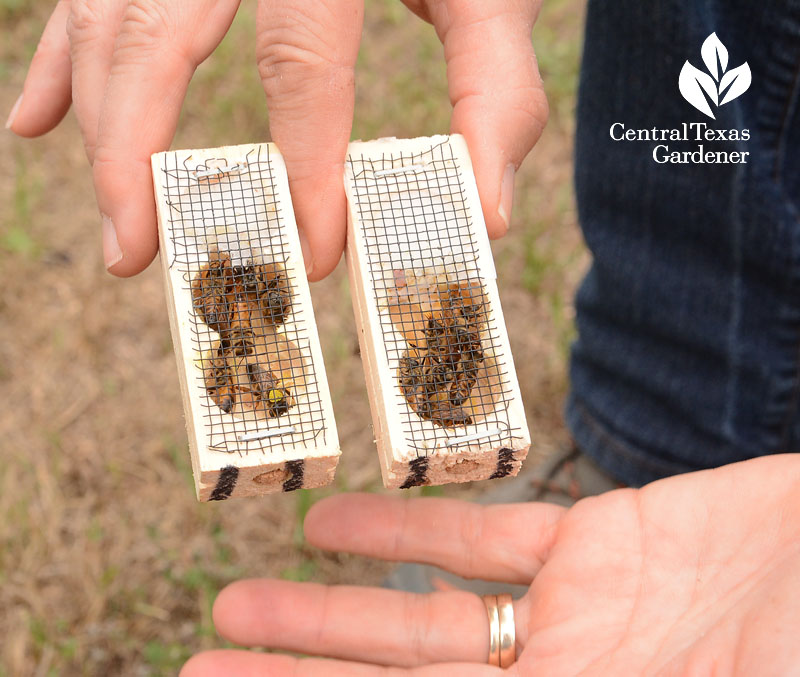
New hives start in EZ Nuc boxes, oriented and painted differently so that when a virgin queen flies out to mate, she knows her “address” where she’ll lay as many as 3000 eggs a day to replace the 1000 workers that die while out foraging.
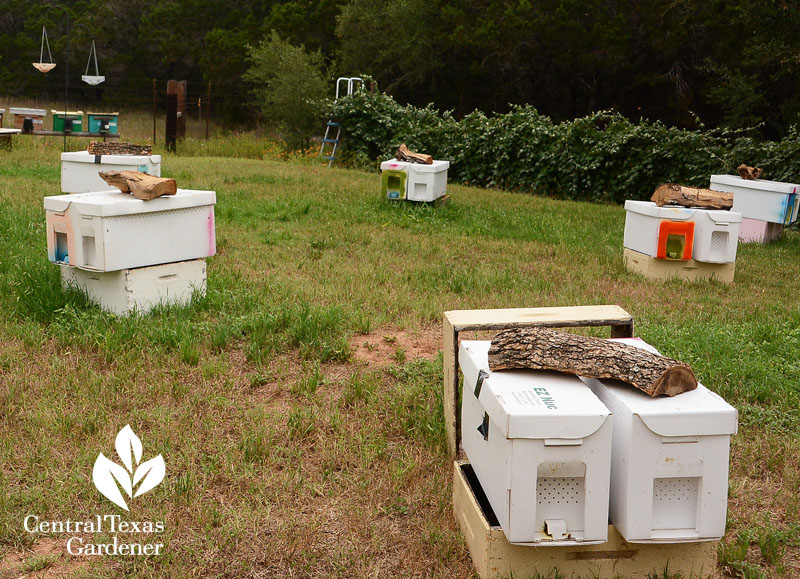
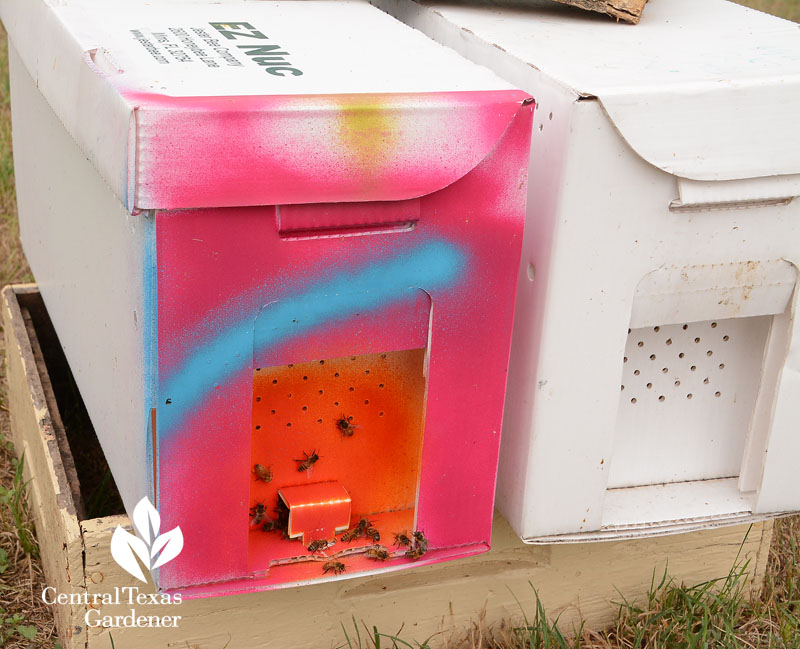
Tanya and Chuck use top bar hives.
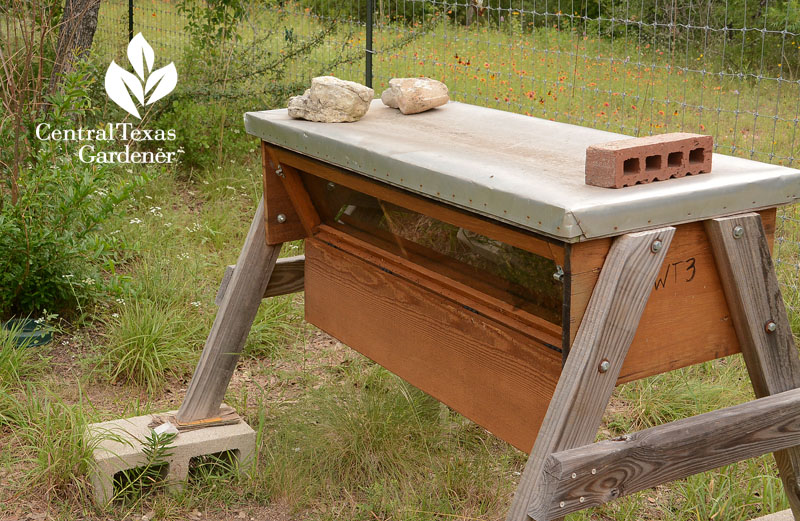
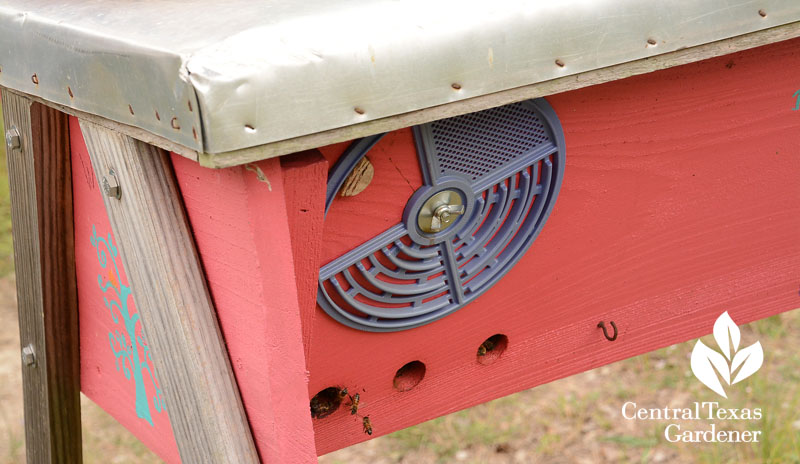
They harvest the wax for natural lip balms.
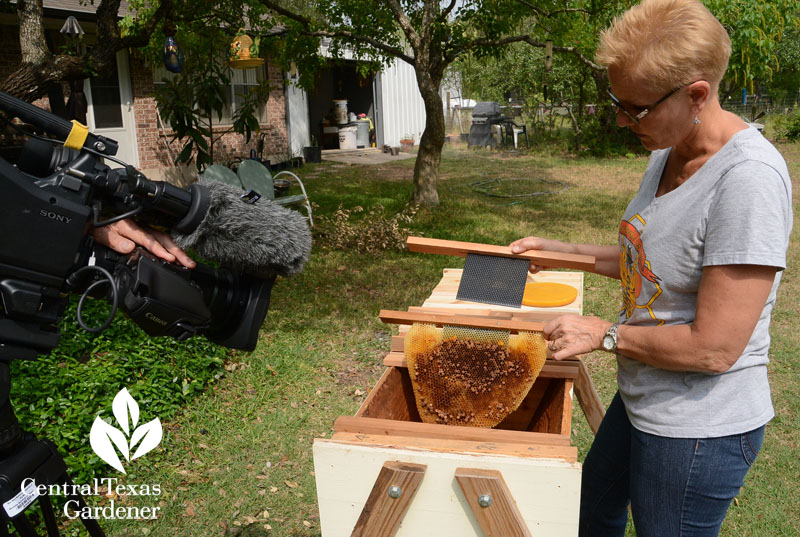
Check out Tanya’s book, Beginning Beekeeping, for step-by-step instructions.
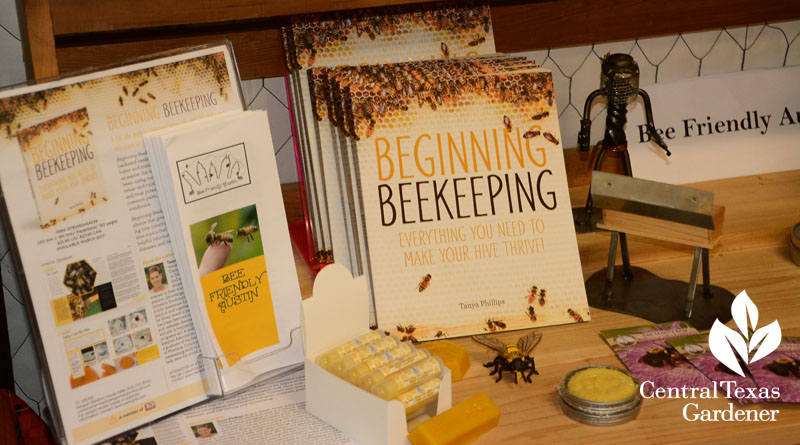
Flowers for bees are key, since starvation means the end of a hive. And the farther worker bees must fly reduces their life span.
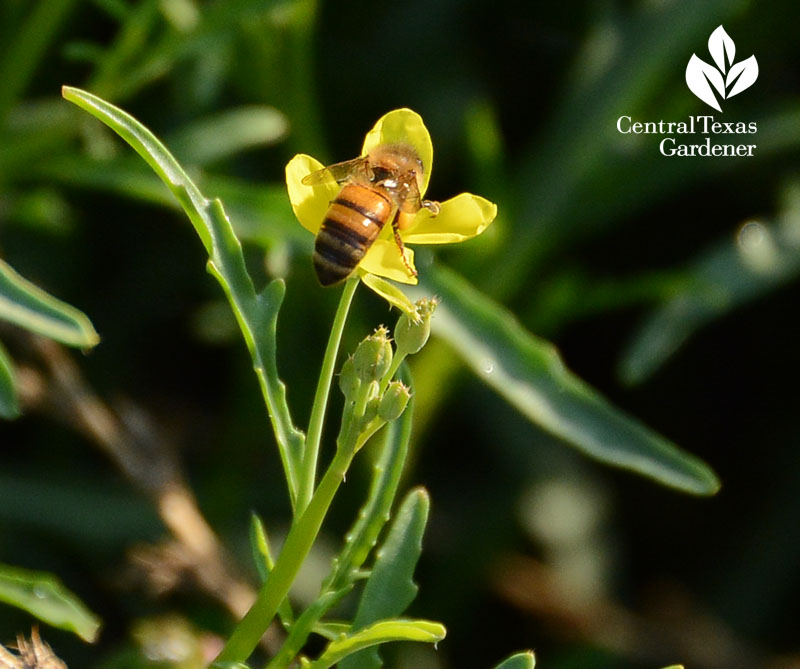
Christine and Ryan had the their hive pollen analyzed, and were surprised to find that their bees are collecting pollen from crape myrtle, sumac, magnolia, and mint. Since they don’t grow any of those plants, they’re thrilled that even their few hives are impacting pollination. And the plants their neighbors grow support their bees.
Water is also essential, but Tanya reminds us that bees can’t swim. Provide shallow water dishes that bees can climb down. She even repurposed ceiling light bowls to snazzy up the drinking trough.
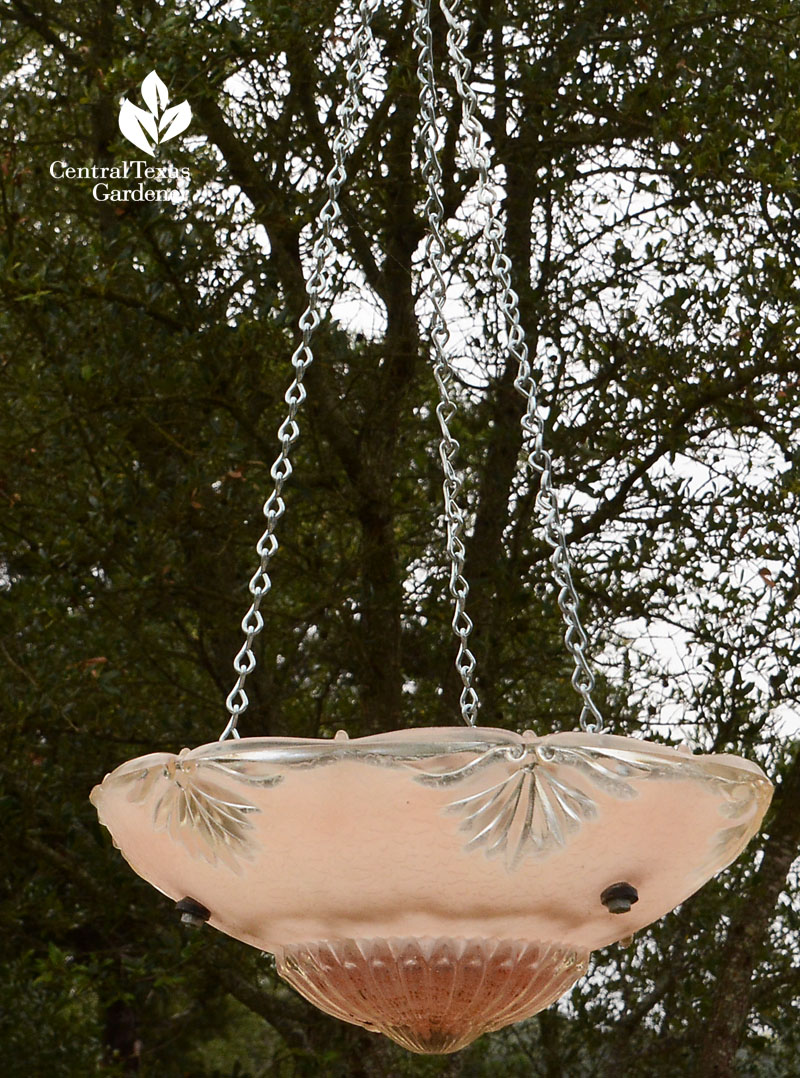
In a pond, provide tall plants that allow safe perches.
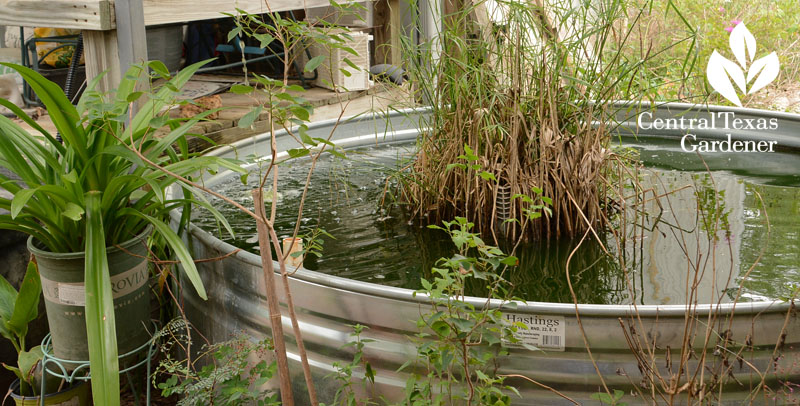
Find local beekeepers, including swarm relocation, education, products, and bees.
Watch now for all the buzz!
Thanks for stopping by! See you next week, Linda







